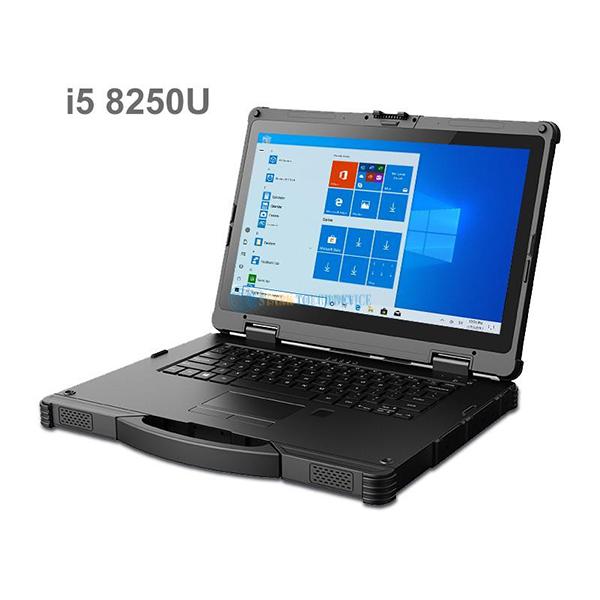Cleaning and maintenance process for the cooling air ducts of industrial control computers
Industrial Computer Cooling Airflow Maintenance Guide: Step-by-Step Cleaning and Optimization
Proper airflow management is critical for industrial computers operating in harsh environments. Dust accumulation, thermal paste degradation, and fan malfunctions can disrupt airflow, leading to overheating and hardware failure. This guide outlines a systematic approach to maintaining cooling efficiency without requiring specialized tools.

1. Pre-Maintenance Preparation
Safety First
Before any maintenance, power down the industrial computer and disconnect all cables. For systems in hazardous environments, follow lockout/tagout procedures. Wear anti-static wristbands to prevent electrostatic discharge (ESD) damage to sensitive components.
Workspace Setup
Place the computer on an anti-static mat in a clean, dust-free area. Prepare tools: soft-bristle brushes, compressed air cans (with nozzle attachments), microfiber cloths, and thermal paste for reapplication if needed. Avoid vacuum cleaners, as they may generate static electricity.
2. Exterior and Intake/Exhaust Cleaning
Filter and Vent Inspection
Many industrial computers feature removable air filters. Gently tap out loose dust or use compressed air to blow debris from the filter mesh. For stubborn grime, rinse the filter with distilled water (if manufacturer-approved) and let it dry completely before reinstallation.
Fan Grill and Vent Cleaning
Use a soft brush to dislodge dust from fan grills and vents. Hold the fan blades stationary with a toothpick or plastic tool while blowing air through the grill to prevent over-spinning, which can damage bearings. Pay attention to rear exhaust vents, where hot air escapes.
3. Internal Component Cleaning
Accessing the Chassis
Remove the computer’s side panel by unscrewing retaining bolts. Some models may require releasing clips or sliding mechanisms. Keep screws organized to avoid misplacement.
Fan and Heat Sink Cleaning
- CPU/GPU Fans: Carefully detach fans from heat sinks. Use compressed air to blow dust from the blades and motor housing. For grease buildup, apply a small amount of isopropyl alcohol (90%+) to a cotton swab and gently clean the blades.
- Heat Sinks: Blow air through the fins in alternating directions to dislodge trapped dust. For aluminum fins, avoid bending them; use a plastic tool to straighten if necessary.
Thermal Paste Reapplication (Advanced)
If temperatures remain high after cleaning, thermal paste between the CPU and heat sink may have dried. Clean the old paste with isopropyl alcohol and a lint-free cloth, then apply a pea-sized amount of new paste. Reassemble carefully to avoid air bubbles.
4. Airflow Path Optimization
Cable Management
Loose cables inside the chassis can block airflow. Use zip ties or Velcro straps to bundle cables along the chassis edges, ensuring they don’t obstruct fan intake or exhaust paths.
Component Spacing
Verify that hard drives, expansion cards, and power supplies are installed with adequate clearance. Overcrowding can trap heat. Refer to the manufacturer’s layout guidelines for optimal spacing.
Environmental Controls
- Temperature: Keep the operating environment between 10°C–35°C. Use industrial fans or HVAC systems to regulate temperature in enclosed spaces.
- Humidity: Maintain relative humidity below 80% to prevent condensation. Dehumidifiers may be necessary in damp environments.
5. Post-Maintenance Testing
Fan Functionality Check
Power on the computer and observe fan operation. Listen for unusual noises (grinding, rattling) indicating bearing wear. Use diagnostic software to monitor RPMs if available.
Temperature Monitoring
After reassembly, run stress tests (e.g., CPU/GPU benchmarks) while monitoring internal temperatures via BIOS or third-party tools. If temperatures exceed specifications, revisit thermal paste application or airflow obstructions.
Documentation
Record maintenance dates, actions taken, and component replacements in a logbook. This helps track degradation patterns and schedule proactive replacements.
6. Preventive Measures
Scheduled Cleanings
Dust accumulation rates vary by environment. In dusty settings (e.g., manufacturing floors), clean filters monthly and perform full chassis cleanings quarterly. Cleaner environments may require biannual maintenance.
Upgrades and Replacements
Replace fans every 3–5 years, as bearing wear reduces efficiency. Consider upgrading to high-static-pressure fans for dense heatsinks.
Environmental Sealing
For extreme conditions, use IP-rated enclosures or positive-pressure systems to minimize dust ingress. Seal unused ports with blanking panels to maintain airflow directionality.
By following these steps, industrial computers can maintain optimal cooling performance, reducing downtime and extending hardware lifespan. Regular maintenance adapts to environmental demands, ensuring reliability in critical applications.
Our company was founded in 2015 by a group of enthusiastic industrial hardware professionals who share a common passion for Iron Man Tony Stark. With their extensive theoretical knowledge and industry experience, the company was born out of a desire to create a high-tech product company in the computer hardware field, aiming to become the “Iron Man” of the computer industry. We specialize in OEM/ODM services, providing high-quality industrial computer production and research and development. Our product forms include touch display monitors, touch all-in-one machines, ruggedized tablets, various new-generation advertising machines, and specialized computers for harsh environmental applications. Our goal is to help customers achieve business value through innovative and high-quality products.Official website address:https://www.starktouchdevice.com/